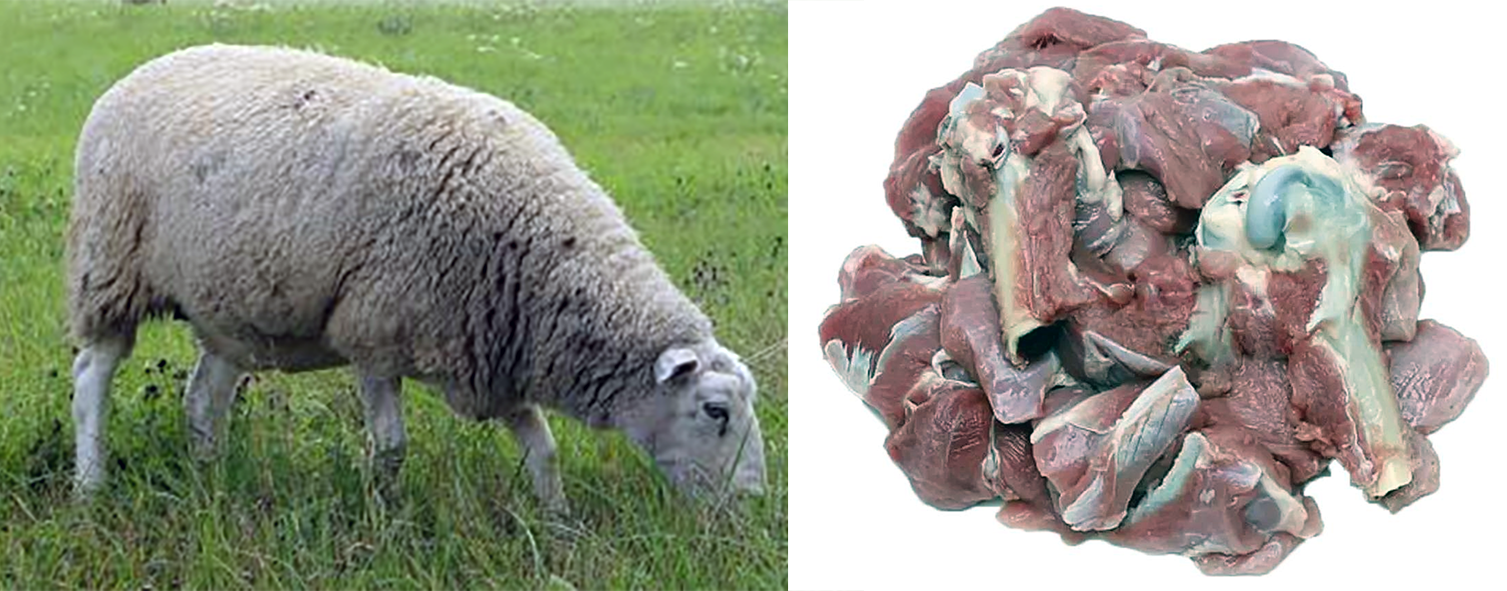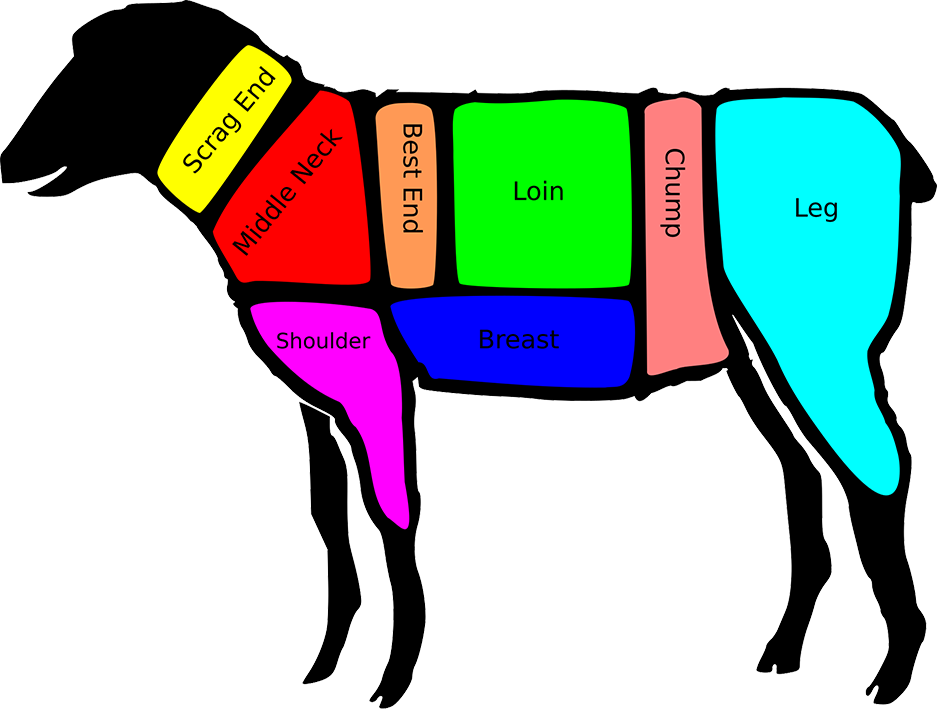FabulousFusionFood's Mutton-based Recipes 2nd Page
 Mature sheep (mutton) and a selection of mutton cuts.
Mature sheep (mutton) and a selection of mutton cuts.
Welcome to FabulousFusionFood's Mutton-based Recipes Page — The recipes presented here are all based on sheep meat. Mutton represents a mature sheep (Ovis aries) which is more than two years old.
Hogget is term for a sheep of either sex having no more than two permanent incisors in wear, or its meat. In the UK, it means animals that are 11 to 24 months old. Still common in farming usage and among speciality butchers, it is now a rare term in British, Australian and New Zealand supermarkets, where meat of all sheep less than two years old tends to be called 'lamb'.
Mutton — the meat of a female (ewe) or castrated male (wether) sheep having more than two permanent incisors in wear. Thin strips of fatty mutton can be cut into a substitute for bacon called macon. In Northern Europe, mutton and lamb feature in many traditional dishes, including those of Iceland, Norway and Western Europe, including those of the United Kingdom, particularly in the western and northern uplands, Scotland and Wales.
Sheep are most likely descended from the wild mouflon of Europe and Asia, with Iran being a geographic envelope of the domestication centre. One of the earliest animals to be domesticated for agricultural purposes, sheep are raised for fleeces, meat (lamb, hogget or mutton), and milk. A sheep's wool is the most widely used animal fibre, and is usually harvested by shearing. In Commonwealth countries, ovine meat is called lamb when from younger animals and mutton when from older ones; in the United States, meat from both older and younger animals is usually called lamb. Sheep continue to be important for wool and meat today, and are also occasionally raised for pelts, as dairy animals, or as model organisms for science.
Sheep meat and milk were one of the earliest staple proteins consumed by human civilization after the transition from hunting and gathering to agriculture. Sheep meat prepared for food is known as either mutton or lamb, and approximately 540 million sheep are slaughtered each year for meat worldwide. "Mutton" is derived from the Old French moton, which was the word for sheep used by the Anglo-Norman rulers of much of the British Isles in the Middle Ages. This became the name for sheep meat in English, while the Old English word sceap was kept for the live animal. Throughout modern history, "mutton" has been limited to the meat of mature sheep usually at least two years of age; "lamb" is used for that of immature sheep less than a year.
Cuts of Mutton (UK, Canada, and other Commonwealth countries):
 Cuts of Mutton:
Cuts of Mutton:Scrag end (of neck) — stewing
Middle neck — braising, stewing
Best End (of neck) — roasting, stewing, braising
Loin (including chops, racks and saddle) — roasting, frying, braising
Chump (and chump chops) — frying
Barnsley chop, a large double loin chop — frying
Leg (gigot in Scotland) including leg steaks — roasting, frying
Shank — braising
Shoulder — roasting Breast — braising
Offal — typically tongue, liver, heart, stomach, sweetbreads, testicles, intestines and kidneys
The alphabetical list of all the mutton-based recipes on this site follows, (limited to 100 recipes per page). There are 118 recipes in total:
Page 2 of 2
| Sindhi-style Pilau Origin: Pakistan | South African Cape Malay Curry Origin: South Africa | To make a Haggas Pudding. Origin: Britain |
| Small Raised Mutton Pies Origin: Scotland | South African Rhus Bukhari Origin: South Africa | Tourtes parmeriennes (Parmesan Pies) Origin: France |
| Souko Dounguouri (Meat Stew with White Beans) Origin: Niger | Sugar Bean Curry Origin: South Africa | Vinthaleaux Origin: India |
| Soupe aux pois et la viande (Pea Soup and Meat) Origin: Guinea-Bissau | Tick-Keeah Kebab Origin: India | Wastels yfarced (White Bread, Stuffed) Origin: England |
| Soupe de mouton (Mutton soup) Origin: Saint-Martin | To boil a chine of veal, or a chicken in sharp broth with herbs Origin: Britain | Wouré Burakhè Magilinri (Sweet Potato Leaf Sauce) Origin: Guinea |
| Soupe Djiboutienne (Djibouti Soup) Origin: Djibouti | To Dress a Hen, Mutton or Lamb the Indian Way Origin: England | Zanzibar Pilau Origin: Tanzania |
Page 2 of 2